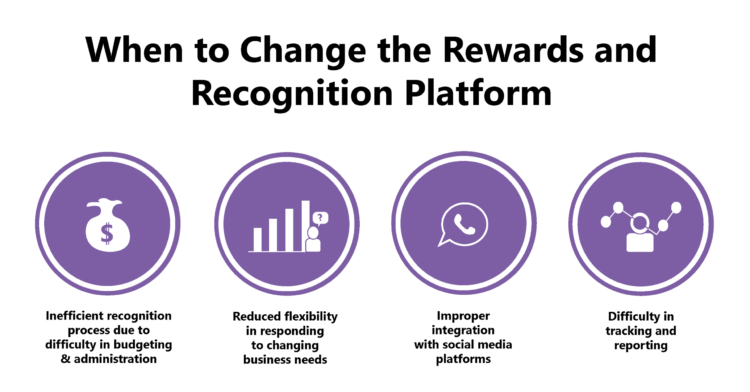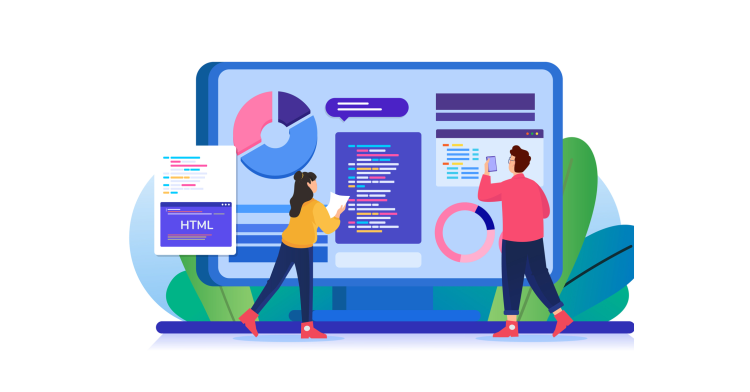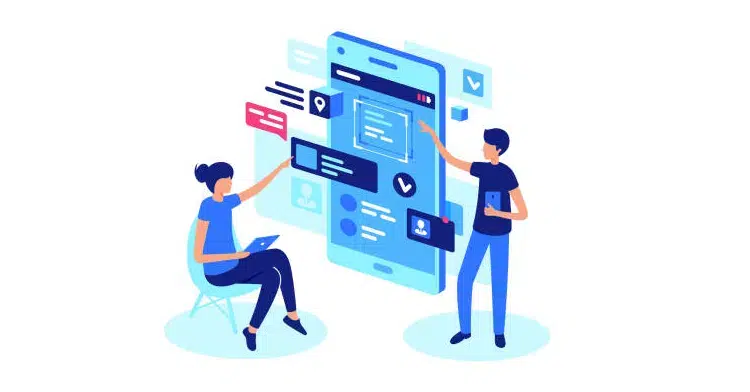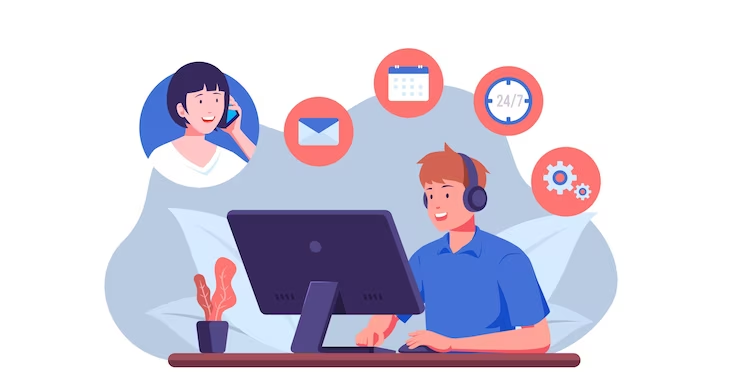1. Ensure platform flexibility: If the current recognition platform lacks the flexibility to adapt to changing business requirements, it may become obsolete and ineffective, signaling a need for change.
2. Improve interoperability: Poor integration with other systems, such as HRMS, collaboration tools, and social media, can reduce platform usage and effectiveness, necessitating a switch to a more integrated solution.
3. Get regular upgrades and support: A platform lacking regular updates or inadequate post-implementation support can hinder program success, prompting organizations to seek a more responsive solution.
4. Monitor and reassess regularly: Continuously evaluate the platform’s effectiveness against current and future needs to ensure it drives employee engagement and aligns with organizational goals.
Employee recognition software is critical for creating a culture of appreciation and driving employee engagement. However, if the system is not producing the desired results, it may be time to consider changing the employee rewards and recognition platform.

Recognition is highly impactful in any work environment, significantly boosting the motivation and performance of employees.
A good recognition platform helps in driving deeper employee engagement besides making the rewards program fair, connected and operationally efficient.
It also helps make the recognition program more integrated with the organization’s core values and culture.
Most importantly, it allows employees to receive recognition for their achievements in real-time.

Most organizations select the best recognition platform after carefully considering the factors determining their efficiency and effectiveness.
However, it is essential to reassess the effectiveness of even the most effective systems periodically.
Business and work environments are constantly changing. These changes can severely impact the effectiveness of even the most perfect recognition platform.
Given these changes, organizations may need to seek more advanced and relevant recognition solutions to continue driving higher employee engagement.
Organizations must regularly assess the suitability of their rewards and recognition platform based on current and future needs.
Organizations need to identify and address any gaps in their existing platforms. These gaps should prompt them to start looking for a new one.
1. Lack of Flexibility of the Solution
2. Poor Interoperability with Other Systems
3. Lack of Regular Product Upgrades
4. Inadequate Post-Implementation Support


Businesses today are undergoing rapid changes that align with shifting market needs.
Hence, flexible employee recognition software should be able to respond to changing business requirements and allow easy reconfiguration.
However, if the current platform is not flexible enough to take care of these changes, it needs to be replaced.
Failing to do so can render the recognition program obsolete and ineffective.

A lack of proper integration with other platforms, such as HRMS and Intranets, can make platform access and data sharing cumbersome.
Additionally, poor integration capabilities with tools such as Microsoft Teams and Slack can make the recognition system feel like an ‘island,’ leading to lower system usage and, ultimately, poor traction in the program.
In such a scenario, it might be better to switch to a new platform that has better integration features.
Social media integration with Facebook and LinkedIn plays a vital role in enhancing the effectiveness of any employee recognition program.
However, the program might lose effectiveness if the recognition platform does not properly integrate with social media tools.

A good employee rewards and recognition software needs regular upgrades.
These upgrades help resolve existing product issues, add advanced features, and improve configurability and integration with other systems.
Hence, if there are few upgrades to the platform, the organization should start looking for more agile and responsive platforms.
A stagnant employee recognition platform can slowly kill an otherwise well-designed and implemented program.

After implementing the recognition software, customer support is critical to the program’s success.
Hence, if the organization is not getting adequate support, it is time to look for a new employee rewards and recognition platform.
Employees should be able to access help and support through various channels, including live chat, chatbots, email, phone, ticketing systems, and FAQs.
The HR should be able to receive support from an account manager for urgent issues, essential queries, and change requests, and get new ideas and best practices for enhancing the program.
A good employee recognition platform can enhance the organization’s culture and employee retention through a seamless experience.
Constantly monitoring and benchmarking the effectiveness and relevance of the recognition program and the platform being used is essential for organizations to understand when to change their employee rewards and recognition platform.

Lead author: Sagar Chaudhuri, the Co-Founder and CEO of HiFives. He is an HR Tech Evangelist with over 25 years of experience in both corporate and entrepreneurial settings. Previously, Sagar has held leadership roles with companies such as Genpact, Infosys, and ICICI Bank. He has an engineering degree from IIT Kharagpur and an MBA from IIM Lucknow. Connect on LinkedIn
To stay updated on the latest HiFives blogs, follow us on Twitter (@MyHiFives)